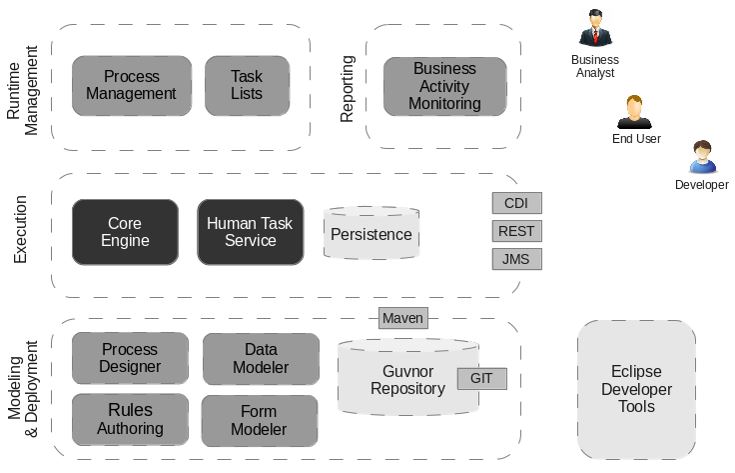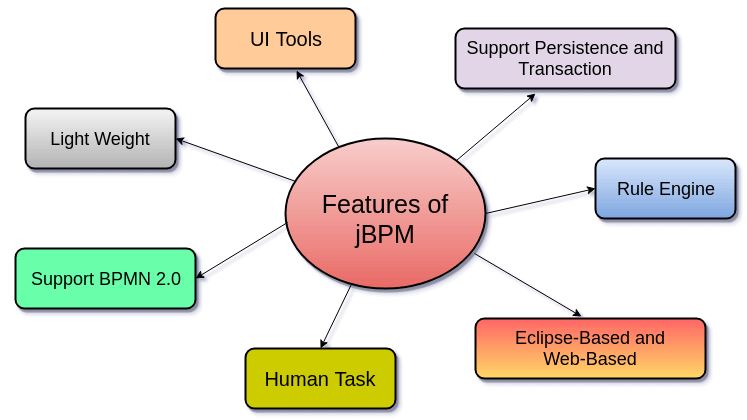- Weblogic Tutorial | A Comprehensive Guide for Beginners
- jBPM – Open Source Business Automation Toolkit | Complete Guide [STEP-IN]
- What is Siebel CRM – Tutorial | A Complete Guide for Beginners
- Liferay Beginner’s Guide Tutorial | Quickstart – MUST- READ
- What is Siebel CRM – Tutorial | A Complete Guide for Beginners
- MS Project Tutorial
- “Microsoft Dynamics 365 Tutorial “
- Appian Tutorial
- BizTalk Server Tutorial
- JBOSS Tutorial
- hybris Tutorial
- Netsuite Tutorial
- Documentum Tutorial
- Workday Tutorial
- Weblogic Tutorial | A Comprehensive Guide for Beginners
- jBPM – Open Source Business Automation Toolkit | Complete Guide [STEP-IN]
- What is Siebel CRM – Tutorial | A Complete Guide for Beginners
- Liferay Beginner’s Guide Tutorial | Quickstart – MUST- READ
- What is Siebel CRM – Tutorial | A Complete Guide for Beginners
- MS Project Tutorial
- “Microsoft Dynamics 365 Tutorial “
- Appian Tutorial
- BizTalk Server Tutorial
- JBOSS Tutorial
- hybris Tutorial
- Netsuite Tutorial
- Documentum Tutorial
- Workday Tutorial

jBPM – Open Source Business Automation Toolkit | Complete Guide [STEP-IN]
Last updated on 10th Aug 2022, Blog, Enterprise Application, Tutorials
Introduction
JBPM Tutorial provides basic and advanced ideas of jBPM. Our jBPM Tutorial is meant for beginners and professionals each. Our jBPM Tutorial includes all topics of jBPM Tutorial like jBPM options, jBPM Eclipse Plugin, salutation World Example, JBPM Runtime, Core Engine API, jBPM Services, jBPM Processes, jBPM part, progress part, progress Validation, jBPM progress Example etc.
What is jBPM?
JBPM stands for Java Business method Management. It’s a versatile business method management suite that is written in Java language. it’s light-weight and absolutely ASCII text file in nature. It permits North American countries to form, deploy, execute and monitor business processes throughout their life cycle. It’s distributed beneath the Apache license and was free beneath the ASL by the JBoss Company.
What is Business Process?
A Business method may be a set of activities that follows the amount of steps in an exceedingly specific order to fulfill the structure goals. The order of those goals square measure is portrayed employing a flow chart. These processes will considerably improve the visibility and legality of our business logic.
Every Business method must be supported throughout their entire life-cycle. These life-cycles include: authoring, deployment, method management & task lists and dashboards & news.
Here may be a graphical flow chart example that helps you to know the Business method simply.

JBPM Introduction:
The on top of method takes place within the following order: First, the workers self-evaluate themselves and submit these self-evaluated reports back to their Project Manager.Now, each the Project Manager and hour Manager evaluates their performance and supply a rating thereon analysis. At last, the feedback is provided to AN worker.
- jBPM Index
- jBPM Tutorial
- jBPM Tutorial
- jBPM options
- jBPM Eclipse Plugin
- Hello World Example
- jBPM Runtime
- Core Engine API
- jBPM Services
- jBPM Processes
- jBPM method Designer
- jBPM Human Task
- Persistence and dealings
- jBPM part
- WorkFlow part
- WorkFlow Validation
- WorkFlow Example
- jBPM Remote Services
Prerequisite
Before learning the jBPM Tutorial, you need to have the fundamental data of JAVA and Business Processes and Application.
Audience
Our jBPM Tutorial is meant to assist beginners and professionals.
JBPM incorporates a heritage method designer and also the latest method designer to form business method diagrams. The newest method designer contains AN increased layout, feature assortment, and is developed incessantly. till we tend to implement all the options of the heritage method designer within the latest method designer, each the method designers exist within the business center for North American countries to use.
Features of JBPM square measure as follows:
Transactions and Persistence
JBPM endorses persistence and transactions that square measure thought to be JTA and JPA.
UI Tools
In the style part, JBPM has UI tools.
Rule Engine
JBPM incorporates a Rule Engine that has AN informative language that we tend to use to see the prevailing data.
Web-Based and Eclipse-Based
JBPM operates on a web-based and Eclipse-based editor that incorporates a drag and drop to help the simulation and graphical interface of the business processes.
Supports BPMN a pair of.0
JBPM concentrates on a pair of.0 description sort of a method definition language. BPMN 2.0 may be a typical international commonplace for method modeling.
jBPM Eclipse Plugin
The eclipse editor acts as a plugin to the Eclipse IDE and permits a North American country to amalgamate our business processes within the development setting. it’s the below features:
A Wizard to form a replacement JBPM Project: within the Eclipse editor, we are able to produce a replacement JBPM project by putting in the Drools plugin.

- Graphical Editor to BPMN 2.0 Process.
- Unit testing our business processes.
- Runtime Support.
- Validation.
- In the below screenshot, we are able to see a business method within the Eclipse IDE.
- jBPM Services
- JBPM API incorporates a cluster of superior services. These services assist U.S. in inserting the business method management techniques into our applications. These services give a set of modules.
Following are the modules:
jbpm-services-api
This API contains API interfaces and categories.
jbpm-services-cdi
This API contains CDI specific code over the jbpm-kie-services.
Jbpm-services-ejb-api
This API contains remote facilities for the interface.
Bpm-services-ejb-client
This API communicates with services on the remote EJB supplication.
jBPM Processes
We can perceive the jbpm processes through BPMN.
What is BPMN?
The full type of BPMN is the Business method Model and Notation. It’s based on the item Management Group(OMG) Specification. The most objective of BPMN is to present a notation that’s simply perceivable to any or all business users.
Following ar the JBPM5 Components:
What is BPMN?
Core Engine
Core Engine is the center of the project and permits the U.S. to implement a business method well. It’s an easy progress engine of java that implements our business processes.
Human Task Services
Human Task Service is a vital section of the beats per minute. It offers the life-cycle of human tasks if any task needs human actors interaction for its execution.
Process Designer
Process Designer permits business users to simulate and style the business method in internet development. It offers a graphical editor to edit and consider our business processes through drag and drop choices.
Persistence
It is a run-time persistence that preserves the states of all the method objects and logs audit information concerning everything that happens at the method execution time.
Data modeler
It permits non-technical users to form, edit, and see the info models that we have a tendency to use within the business processes. The information modeler tool offers physical and logical information models while not specific to writing.
Rules Authoring
It permits the U.S. to outline numerous types of business rules for the consolidation of the business processes. Examples for the business rules are target-hunting rules, call tables, etc.
Form modeler
It permits the U.S. to get, or produce the forms related to our business processes or whereas execution the task. The type modeler tool assists U.S. in making the forms while not the necessity of any template or committal to writing markup skills.
Core-Engine API
Core-Engine API produces an associate degree API that’s necessary to execute and cargo the method. This API permits the U.S. to get a knowledge domain that includes all the method definitions that are enforced by the session.
Knowledge Base
The knowledge domain acts as a storage for all the acceptable method definitions. its processes, functions, kind models and rules. we are able to produce a knowledge domain one time, and that we will modify it dynamically.
Session
Knowledge Base incorporates a referral to the session. On every occasion we want to start out a business method, we’ve got to line up a session that’s answerable for interaction with the method engine.
How to produce a Business Processes in Business Central
We chose the method designer as the JBPM method modeler. From the method modeler, we have a tendency to get a BPMN a pair of.0 method definition file, and that we use that definition file as associate degree input to the JBPM engine, that creates a business method consistent with the definition.
Procedure to form a business method
Step1: Open the business center, visit “Menu/Design/Projects”.
Step2: For gaps in the quality list of the project, we have a tendency to press the “Project Name”.
Step3: Press “Add Asset/Business Project”.
Step4: visit the “Create New Business Process” window, kind the below values:
Business method: New Name of the Business Process.
Package: The package path of our business method is: “ com.myspace.myProject”.
Step5: Press “OK” for the method designer.
jBPM progress elements
1. begin Event
It is the starting(beginning) node of the business method. Each business method has just one beginning node. This node includes only 1 outgoing affiliation, and it doesn’t contain any incoming affiliation.
2. End Event
It is the ending node of the method. A business method will have multiple ending events. The ending node contains only 1 incoming affiliation, and it doesn’t contain any outgoing affiliation.
3. Rule Task
Rule Task Creates a bunch of rules that need analysis within the business method. Every rule task contains one outgoing affiliation and one incoming affiliation. we have a tendency to outline the rule task in a very separate file through the drools rule format.
4. Gateway(Converge)
It amalgamates the multiple ways into one. we are able to have multiple incoming affiliations and only 1 outgoing connection. It contains the below properties:
Id: it’s the symbol of the node. The “ID” ought to be distinctive.
Name: it’s the name of the business method node.
kinds of merging entry are:
AND: The business method management flow starts once the completion of incoming connections, or it’ll sit up for the completion of the incoming branches.
OR: The business method management flow starts once the completion of the direct active path of the incoming branches.
XOR: The business method management starts once the completion of a minimum of one incoming affiliation.
5. Gateway(Diverge)
It permits the U.S. to get a replacement path within the business method. it’s multiple outgoing affiliations and only 1 incoming connection. It contains the below properties:
ID:it’s the symbol of the business method node. The “ID” should be distinctive.
Name: it’s the name of the business method node.
Types of Diverge entry Node:
XOR: It chooses solely one(single) outgoing path through some intrinsic restraints of progress.
OR: It picks the outgoing connection whose status is determined to be true.
AND: The business method management flow continues for all the outgoing connections at the same time.